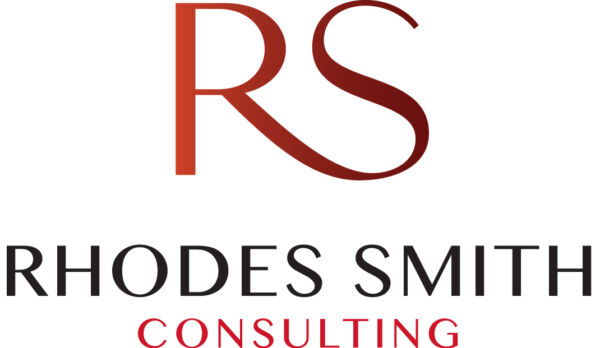
Organizational change is notoriously challenging. Research shows that nearly 80% of change efforts fail, and the usual culprits—poor communication, inadequate resources, ineffective training, or competing priorities—are only part of the story. These factors contribute to failure, but they don’t get to the heart of why so many changes fall short.
I believe there’s a more fundamental issue at play, one that’s easy to overlook but far harder to navigate.
At its core, successful change isn’t about strategy, budget control, or timelines. It’s about caring for others, prioritizing their needs above your own, and understanding how your work directly influences their ability to succeed.
In other words, this is not a change or project management problem—instead, there’s a lack of proactive customer service in the organization.
THE REAL PROBLEM: CHANGE WITHOUT EMPATHY
Too often, change efforts are driven by teams that hold the budget, set the strategy, and control the project roadmap—but without fully understanding how their work currently helps or hinders the employees they are affecting. They don’t have a grasp of the day-to-day processes their internal clients use to get work done, nor do they understand how those employees define success. And when new technologies, processes, or role changes are introduced, this gap becomes painfully apparent.
This is not a problem that traditional change management models—like PROSCI or Big 4 frameworks—can fully solve. While these methodologies focus on stakeholder engagement, communication, training, and sustainment, they often assume that the implementing teams are already aligned with the needs of those affected. But when internal teams are disconnected from the experience of their internal customers, no amount of stakeholder meetings or post-launch check-ins will compensate for the cultural gap that undermines the entire change effort.
In my experience, organizations that thrive during change are the ones whose leaders and teams maintain an ongoing awareness of their internal customers’ needs—long before any change initiative begins. True customer service in change means understanding:
- What your internal clients currently struggle with—the bottlenecks, frustrations, or inefficiencies that prevent them from achieving results.
- How your processes, tools, and support impact their ability to succeed—both positively and negatively.
- Where they are now, so you can address real issues, not impose solutions to problems they haven’t expressed.
When functions and project teams focus on their own priorities—like meeting deadlines, staying on budget, or achieving operational metrics—without truly listening to their internal customers, frustration and resistance naturally follow. Employees resist not just because of the change itself, but because they feel overlooked, misunderstood, or unsupported.

CARING AND PRIORITIZING OTHERS: THE KEY TO LASTING CHANGE
For change to succeed, functions and teams must lead with care—understanding that their job is to support their internal clients’ success, not just execute projects. This shift from “What do we need to deliver?” to “How can we help others succeed?” is the cornerstone of sustainable change.
In my experience, organizations that thrive during change are the ones whose leaders and teams maintain an ongoing awareness of their internal customers’ needs—long before any change initiative begins. This mindset isn’t about waiting for a project to introduce alignment; it’s about being proactive, intentional, and connected throughout the relationship.
Failing to align these decisions with the real challenges employees face can unintentionally create friction, disrupt workflows, and sow distrust.
HOW TO EMBED CUSTOMER-CENTERED CHANGE AT EVERY STAGE
Building a culture that prioritizes the needs of others requires proactive/intentional steps—before, during, and after change efforts. Here’s how you can integrate care, empathy, and alignment into your change initiatives.
Prior to Change: Proactive Understand of the Client’s Reality
- Listen First – Conduct a Needs Assessment:
- Host discovery sessions or surveys with internal clients to surface their current challenges, frustrations, and priorities.
- Identify how you and your team are solving internal client challenges now and how progress is communicated.
- Ask how existing processes or tools help—or hinder—their ability to meet their goals.
- Shift from Delivery to Service:
- Instead of focusing on “delivering” a change, ask: What do our internal customers need to achieve success, and how can we support that?
- Ensure that your change initiative addresses real issues that employees care about.
- Map Influence Points:
- Identify where your function’s work intersects with internal clients’ strategies, metrics, processes, and shared goals.
- Be transparent in highlighting where your changes could either enhance or disrupt their success—so alignment can be made early.
DURING THE CHANGE: LEAD WITH EMPATHY & ENABLEMENT
- Care Actively – Empower Success Through Communication:
- Provide personalized, role-specific training that shows employees how the change improves their day-to-day tasks.
- Acknowledge and validate frustrations, offering reassurance that the team is available to help them navigate disruptions.
- Check In Frequently:
- Establish regular feedback loops to track what’s working and what’s not.
- Use these touchpoints to adjust processes quickly, rather than waiting for post-implementation reviews.
- Make Change Support Visible:
- Set up clear channels for support (e.g., office hours, help desks, or digital tools).
- Ensure employees know who to contact when challenges arise and feel confident that their concerns will be addressed.
AFTER THE CHANGE: MEASURE, LEARN, AND SUSTAIN
- Evaluate Impact Through the Client’s Lens:
- Assess the change not only through operational metrics but also through employee feedback and experience.
- Ask: Did this change help employees perform their roles more effectively? If not, what adjustments are needed?
- Recognize Success and Address Gaps:
- Celebrate quick wins that show how the change has benefited employees and the organization.
- Identify unresolved challenges, and follow up with those impacted to co-create solutions.
- Continue the Relationship:
- Maintain regular check-ins and feedback loops beyond the change project’s conclusion.
- Stay proactive in understanding evolving needs, ensuring that future changes are aligned with employees’ realities.

CONCLUSION: TRUE CHANGE STARTS WITH CUSTOMER SERVICE
Organizational change is not just a technical or strategic exercise—it’s a service to the people it impacts. To succeed, leaders and teams must adopt a mindset of care, where the priority is continuous engagement, empathy, and alignment with employee needs year round, not just when project plans, teams, and budgets are available.
The secret to successful change lies in closing the cultural gap by knowing your internal customers, understanding their challenges, and aligning your work with their success. This requires humility, empathy, and a willingness to prioritize their needs ahead of your own. Proactive customer service – before, during, and after the change – establishes trust that sets the foundation for lasting, impactful transformation.
The takeaway? The better you understand how you support and enable your internal customers now, the more likely your future change efforts will succeed. Start with customer service, and successful change will follow.
Need organizational change management templates or examples? Click here to download free copies developed by Rhodes Smith Consulting!






